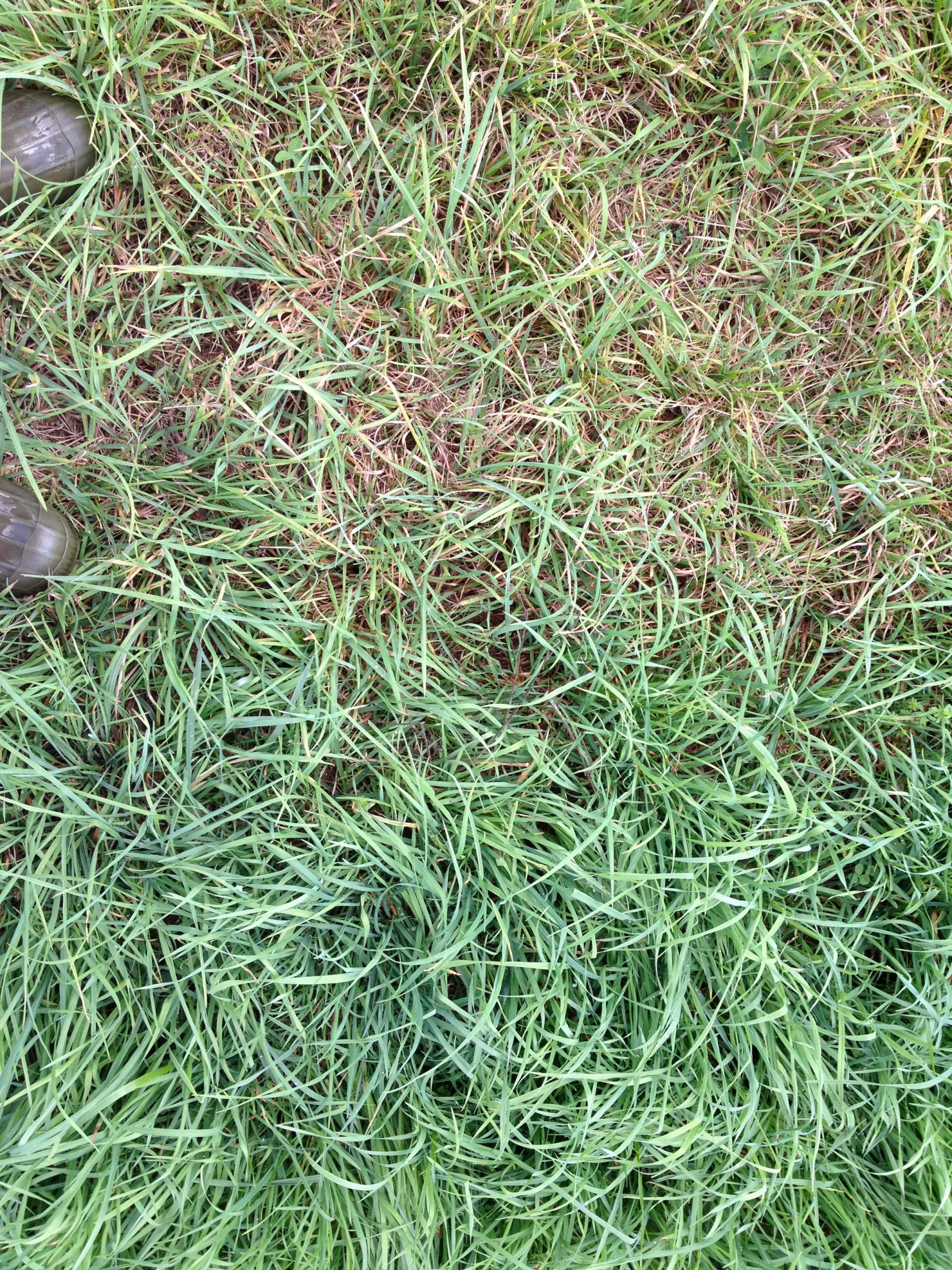I don’t have much more to add to my previous post on this subject. The real “proof-in-the-pudding” will arrive in the spring with the new grass. If the lush green stripes return, viola! We’ve done something real—though, in a small way. If not, we’ll go back to the drawing board.
I do want to share, however, some more photos I came across while digging through the shots from this summer. They’ll give you a good indication of the incredible improvement we saw in the part of the hayfield that had the benefit of the chickens’ attention.
In Exhibit A, you can a cross-section of the field. The lush, thick, darker-green grass near the top of the photo had 50 chickens on it for ONE DAY. Whereas, the thin, course, yellowed grass shown in the bottom half of the photo had no chickens on it. Unfortunately, most of this particular hayfield looks like this.

In Exhibit B, you can see the chicken stripe from above. The difference is incredible. I still can’t believe how much improvement a single day of playing host to a flock of birds can have for the land. Truly, it is clear that land needs animals as much as animals need the land.

In Exhibit C, you can see how much taller and thicker the “chickened” grass has grown in the same amount of time as the rest of the field. The entire field was mowed on the same day in late May. This photo was taken on October 8th.

In Exhibit D, you can see the marked difference in color.

In case you’re wondering, here are some photos of our set-up.




Our current hayfield-improvement plan is to rotate the bird field every year through our five hayfields. When a field becomes the bird field, it will be home to the chicken and turkey tractors. (This year we’re planning a “bunch” more birds, with several new tractors with an improved—though similar—design. I’ll release those when they’re complete.) The bird field will not be hayed that year, but rather the grass will be cut back onto itself when it has reached the “nursing home grass” state, as Salatin calls it. (Were I more ambitious I would enlist the help of a flock of sheep or a herd of cattle to do the pre-chicken tractor mowing. But I’ve got all I can chew at the moment.) The bird field will also receive the full tonnage of composted manure from our horse boarding operation—complete with the full load of worms for the birds to find. And finally, before winter, the field—as all our fields are—will be aerated using a “no-till” vertical tillage aerator.
It is my hope that any field receiving this treatment every five years will continue to improve despite the torments of hay production. This is my experiment. I may be disappointed. Time will tell.
And finally, if you’d like to continue reading about this experiment, I will be moving this lineup of blog posts over to a new web site for Studio Hill, our forthcoming pastured poultry company. I will provide a link here once it is up. This Pullman Farm blog will focus, in the future, on our horse operation and its activities. I’m hoping to lure in some guest bloggers so that the blog will contain useful information about horses. I’m learning, but I know what I don’t know.
Onward!

